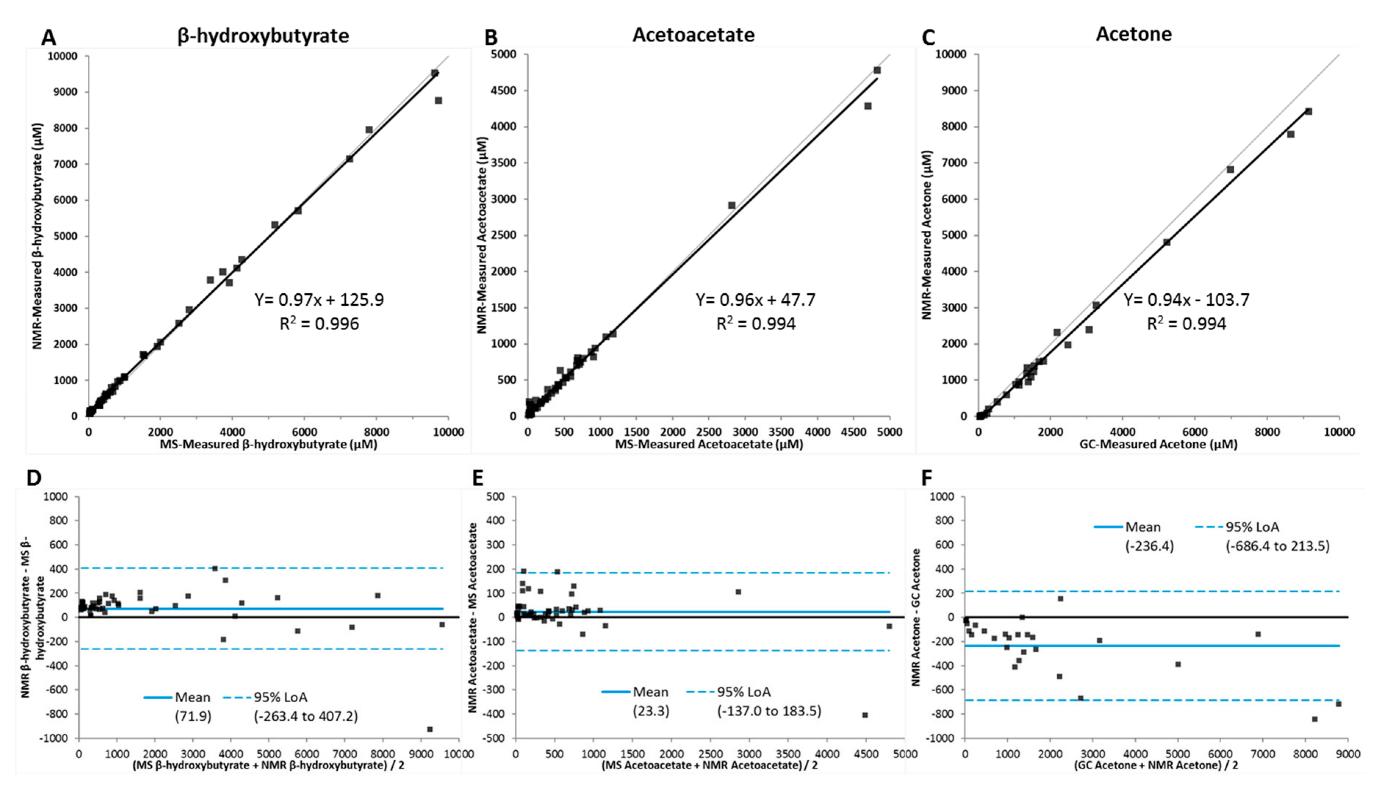What are Ketone Bodies?
Ketone bodies are water-soluble molecules that are produced in the liver during the metabolism of fatty acids. They serve as an alternative energy source, particularly when glucose is scarce, such as during prolonged fasting, intense physical activity, or adherence to a low-carbohydrate diet. Ketone bodies are crucial for maintaining energy balance in the body, providing a vital fuel for the brain, heart, and muscles when carbohydrate intake is limited.
There are three primary ketone bodies: acetoacetate, beta-hydroxybutyrate, and acetone. Acetoacetate is the first ketone body produced in the liver from the breakdown of fatty acids. It can be further converted into beta-hydroxybutyrate, which, despite its name, is not a true ketone due to its chemical structure but is often referred to as one. Beta-hydroxybutyrate is the most abundant ketone body in the blood and serves as a significant energy source, especially for the brain and muscles. Acetone is a byproduct of acetoacetate decarboxylation and is the least abundant ketone body. It is mostly excreted from the body through the lungs, which gives a characteristic fruity odor to the breath of individuals in ketosis.
Ketone bodies are synthesized in the liver mitochondria through a process called ketogenesis. This process involves the breakdown of fatty acids into acetyl-CoA, which is then converted into acetoacetate. Acetoacetate can be further reduced to beta-hydroxybutyrate or can spontaneously decarboxylate to form acetone. These ketone bodies are then released into the bloodstream, where they can be transported to other tissues and organs to be used as an energy source.
Ketone bodies play several essential roles in the body. They provide an alternative energy source during periods of low glucose availability, helping to preserve muscle protein by reducing the need for gluconeogenesis from amino acids. They also help regulate metabolism and can act as signaling molecules to influence gene expression and protein activity. Additionally, ketone bodies have significant clinical relevance in various conditions. For example, in uncontrolled diabetes, particularly type 1 diabetes, excessive ketone production can lead to diabetic ketoacidosis (DKA), a life-threatening condition. Ketogenic diets, which elevate ketone body levels, have been used to control seizures in drug-resistant epilepsy and may also play a role in weight management and improving metabolic health. Emerging research suggests that ketone bodies may have neuroprotective effects and potential therapeutic roles in neurological disorders such as Alzheimer's and Parkinson's diseases.
Understanding ketone bodies and their functions is crucial for both research and clinical applications. At Creative Proteomics, we specialize in the detailed analysis of ketone bodies, providing valuable insights that support advancements in these areas. Our comprehensive ketone analysis services help researchers and clinicians better understand metabolic states, disease conditions, and the impacts of dietary interventions.
Ketone Bodies Analysis Service Offered by Creative Proteomics
Ketone Quantitative Analysis: Accurate quantification of ketone bodies in various sample types, including blood, urine, and tissues. This service provides precise measurements of ketone concentrations, essential for understanding metabolic states and disease conditions.
Ketone Qualitative Analysis: Identification and characterization of different ketone compounds present in samples. This service helps in detecting and profiling various ketones, aiding in metabolic studies and clinical diagnostics.
Ketone Metabolic Profiling: Detailed profiling of ketone-related metabolic pathways. Our metabolic profiling service offers insights into the biochemical processes involving ketone bodies, helping to elucidate their roles in health and disease.
Custom Analysis: Tailored services to meet specific research needs and objectives. Whether you require specialized detection methods or unique sample preparation protocols, our custom analysis service can be adapted to your particular requirements.
Comprehensive Reporting: Detailed reports including quantitative and qualitative data, analytical methodology, and interpretative summaries. Our reports provide a thorough analysis of your samples, with insights and implications relevant to your research or clinical objectives.
Environmental and Industrial Applications
Ketone analysis for environmental and industrial samples, including quality control and contamination assessment in various settings.
List of Detectable Ketone Compounds
| Acetone | Acetoacetate | Beta-hydroxybutyrate | Acetophenone | Methyl Ethyl Ketone |
| Methyl Isobutyl Ketone | Diacetyl | Cyclohexanone | Isobutyraldehyde | Isophorone |
| 2-Pentanone | 3-Pentanone | 2-Hexanone | 3-Hexanone | 2-Heptanone |
| 3-Heptanone | 4-Heptanone | Mesityl Oxide | 2-Octanone | 2-Nonanone |
| 2-Decanone | 3-Decanone | 2-Undecanone | 2-Dodecanone | 3-Dodecanone |
| 2-Tridecanone | 3-Tridecanone | 2-Tetradecanone | 3-Tetradecanone | 2-Pentadecanone |
| 3-Pentadecanone | 2-Hexadecanone | 3-Hexadecanone | Levulinic Acid | Butyrophenone |
| Phenylacetone | Valerophenone | Caprophenone | Heptanophenone | Octanophenone |
| Nonanophenone | Decanophenone |
|
|
|
Analytical Techniques for Ketone Bodies Analysis
Gas Chromatography-Mass Spectrometry (GC-MS)
Instrument: Agilent 7890A GC System coupled with an Agilent 5975C MSD
Features:
- High Sensitivity and Specificity: Capable of detecting and quantifying ketones at very low concentrations.
- Volatile and Semi-Volatile Compounds Analysis: Ideal for analyzing small, volatile ketone compounds such as acetone.
- Robust Separation Capabilities: Excellent for separating complex mixtures into individual components.
Liquid Chromatography-Mass Spectrometry (LC-MS)
Instrument: Thermo Scientific Q Exactive HF Hybrid Quadrupole-Orbitrap Mass Spectrometer
Features:
- High Resolution and Precision: Provides accurate mass measurements and high-resolution data.
- Complex Matrix Analysis: Suitable for analyzing ketones in complex biological samples like blood, urine, and tissue extracts.
- Wide Dynamic Range: Allows detection and quantification of ketones over a broad concentration range.
High-Performance Liquid Chromatography (HPLC)
Instrument: Waters ACQUITY UPLC System
Features:
- High Resolution and Accuracy: Excellent for separating and quantifying ketone bodies in liquid samples.
- Versatile Applications: Suitable for a wide range of biological fluids and sample types.
- Reproducible Results: Ensures consistent and reliable quantification of ketones.
Nuclear Magnetic Resonance (NMR) Spectroscopy
Instrument: Bruker AVANCE III HD 600 MHz NMR Spectrometer
Features:
- Non-Destructive Analysis: Preserves sample integrity while providing detailed structural information.
- Comprehensive Structural Insights: Offers in-depth information on molecular structure and dynamics of ketones.
- Quantitative Capabilities: Can quantify ketone concentrations accurately without extensive sample preparation.
Fourier Transform Infrared (FTIR) Spectroscopy
Instrument: Thermo Scientific Nicolet iS50 FTIR Spectrometer
Features:
- Functional Group Identification: Identifies specific functional groups within ketone molecules.
- Molecular Structure Analysis: Provides detailed information about the molecular composition and structure.
- Rapid and Efficient: Quick analysis with minimal sample preparation required.
Sample Requirements for Ketone Bodies Analysis
| Sample Type | Recommended Quantity |
|---|
| Blood Plasma/Serum | Minimum 500 µL |
| Tissue Samples | Minimum 50 mg (wet weight) |
| Cell Culture | Minimum 1 x 106 cells |
| Urine | Minimum 10 mL |
| Cerebrospinal Fluid (CSF) | Minimum 500 µL |
If you have any questions about our lipidomics services, please contact us.
Case Development and Validation of an NMR-Based Assay for Quantification of Ketone Bodies
Background
Ketone bodies, including β-hydroxybutyrate (β-HB), acetoacetate (AcAc), and acetone, serve as crucial metabolic indicators, reflecting energy metabolism shifts during conditions like fasting, ketogenic diets, and metabolic diseases such as type 2 diabetes mellitus (T2DM). Traditional methods for ketone body quantification have limitations, prompting the development of advanced NMR-based assays to overcome these challenges.
Samples
The study utilized serum samples from diverse populations, including generally healthy adults and individuals with T2DM from the Insulin Resistance Atherosclerosis Study (IRAS). Sample stability and compatibility with various collection tubes (plain serum, EDTA plasma, heparin plasma) were evaluated to ensure assay reliability.
Technical Methods
The assay employed a novel NMR-based deconvolution method leveraging non-negative linear least squares algorithms to resolve overlapping signals from ketone bodies, proteins, carbohydrates, and lipoproteins in 1D 1H NMR spectra of serum samples. Key technical aspects include:
- Deconvolution Strategy: Mathematical modeling to quantify β-HB, AcAc, and acetone concentrations amidst spectral overlaps.
- Performance Metrics: Determination of Limits of Blank (LOB), Limits of Detection (LOD), and Limits of Quantitation (LOQ) to establish assay sensitivity and reliability.
- Precision and Accuracy: Intra-assay and inter-assay precision evaluations, linearity assessments across clinically relevant concentration ranges, and method comparison studies against LC/MS/MS and GC/MS methods.
- Tube Suitability and Stability: Assessment of different specimen collection tubes and stability profiles under various storage conditions (room temperature, refrigerated, frozen) to ensure sample integrity and assay consistency.
Results
The NMR-based assay demonstrated robust analytical performance:
- Sensitivity and Specificity: High sensitivity with LODs ranging from 11.2 to 61.2 µM and accurate quantification across a wide dynamic range.
- Precision: Low coefficients of variation (CVs) for intra-assay (1.3%–9.3%) and inter-assay (3.1%–9.1%) precision.
- Accuracy: Strong correlations (R² = 0.994–0.996) with gold standard methods (LC/MS/MS, GC/MS) confirmed by Deming regression analysis.
- Clinical Utility: Establishment of reference intervals for ketone bodies in healthy adults and associations of elevated ketone levels with metabolic dysregulation in T2DM.
 Deming regression comparison between LC/MS/MS or gas chromatography and NMR measured (A) β-hydroxybutyrate (n = 50), (B) acetoacetate (n = 50), and (C) acetate (n = 27) in serum samples. Bland–Altman plots for (D) β-hydroxybutyrate, (E) acetoacetate, and (F) acetone assays. The limits of agreement (LOAs) are depicted as dotted blue lines and the 0% bias is a solid black line.
Deming regression comparison between LC/MS/MS or gas chromatography and NMR measured (A) β-hydroxybutyrate (n = 50), (B) acetoacetate (n = 50), and (C) acetate (n = 27) in serum samples. Bland–Altman plots for (D) β-hydroxybutyrate, (E) acetoacetate, and (F) acetone assays. The limits of agreement (LOAs) are depicted as dotted blue lines and the 0% bias is a solid black line.
Reference
- Garcia, Erwin, et al. "Ketone bodies are mildly elevated in subjects with type 2 diabetes mellitus and are inversely associated with insulin resistance as measured by the lipoprotein insulin resistance index." Journal of Clinical Medicine 9.2 (2020): 321.


 Deming regression comparison between LC/MS/MS or gas chromatography and NMR measured (A) β-hydroxybutyrate (n = 50), (B) acetoacetate (n = 50), and (C) acetate (n = 27) in serum samples. Bland–Altman plots for (D) β-hydroxybutyrate, (E) acetoacetate, and (F) acetone assays. The limits of agreement (LOAs) are depicted as dotted blue lines and the 0% bias is a solid black line.
Deming regression comparison between LC/MS/MS or gas chromatography and NMR measured (A) β-hydroxybutyrate (n = 50), (B) acetoacetate (n = 50), and (C) acetate (n = 27) in serum samples. Bland–Altman plots for (D) β-hydroxybutyrate, (E) acetoacetate, and (F) acetone assays. The limits of agreement (LOAs) are depicted as dotted blue lines and the 0% bias is a solid black line.
